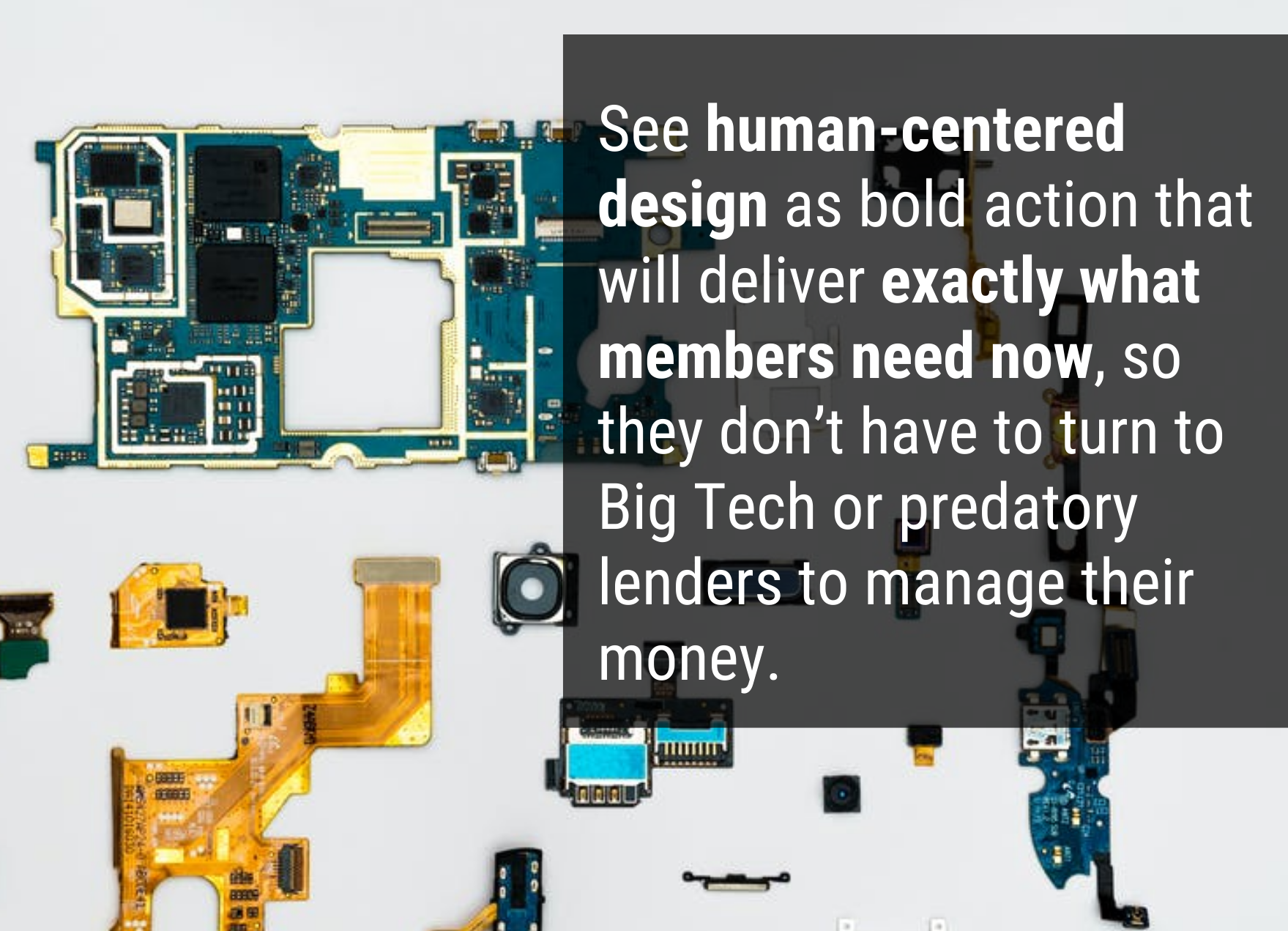Change Your CU’s Approach to Innovation Through Empathy
By Micheal Herman, President of AdvantEdge Digital, a CUNA Mutual Group company
The best product innovation strategies are cyclical. You might even say product design in the digital era is never really finished. While such a notion can feel intimidating, it’s actually quite workable, even for organizations without a deep bench of product people.
In my experience, the most effective of these strategies is human-centered design, a philosophy rooted in the same value system as credit unions. Human-centered design starts and “ends” (though it never truly ends) with empathy and context. Through qualitative research, mainly one-on-one conversations and/or job shadows with prospective users to understand their pains, gains, needs, and jobs to be done, product designers gain empathy for the people they ultimately hope to serve. At the same time, they gather contextual expertise by engaging a series of personas across the spectrum of potential users.
Stepping into Members’ Shoes
 Take a digital lending solution, for example. Designing a feature like an intuitive payment calculator requires an understanding of what’s most important to potential auto loan borrowers. A first-time car buyer may be most interested in comparing monthly payments across different loan terms, whereas a seasoned car buyer may want to calculate a payment that includes GAP or credit insurance. Putting themselves squarely in the shoes of eventual users is critical to guiding designers through things like features, navigation, and third-party integration best suited to the personas pertinent to the credit union’s strategic business goals.
Take a digital lending solution, for example. Designing a feature like an intuitive payment calculator requires an understanding of what’s most important to potential auto loan borrowers. A first-time car buyer may be most interested in comparing monthly payments across different loan terms, whereas a seasoned car buyer may want to calculate a payment that includes GAP or credit insurance. Putting themselves squarely in the shoes of eventual users is critical to guiding designers through things like features, navigation, and third-party integration best suited to the personas pertinent to the credit union’s strategic business goals.
Of course, what is most important to a persona segment today may not be most important tomorrow. The pace of change in the modern world is astonishing. Sometimes it’s even paralyzing. Organizations afraid of being late to the party end up just staying home. How many times have you heard someone respond to a proposal for a new product or service with, “Our competitors are already doing that. It’s table stakes.”? The idea fizzles, and members continue to engage with competitors.
Going to the Party, No Matter How Late
Human-centered design gives credit unions permission to launch a product or service (even one that might be perceived as table stakes) quickly and without a lot of back and forth, nail biting, or hand wringing. And that’s because the product is intentionally launched imperfectly. Sure, it must first pass muster in terms of desirability, feasibility, and viability (plus security and compliance). But the idea is that from Launch Day No. 1, product designers are watching, listening to, and learning from real-life users and responding to what they hear through rapid iteration.
If this strategy sounds like building the plane as it’s flying, that’s because it is. But don’t let that turn you off. Many people, particularly those working in highly regulated, legacy industries, are uncomfortable with the strategy at first because it feels too far from the way innovation has always been done. Credit union leaders are looking out for their members above all else, therefore are naturally opposed to doing anything that feels like a risk. That’s perfectly reasonable, perhaps even admirable.
Yet, I challenge these great leaders to look at human-centered design not as a wild, crazy experiment that uses members as guinea pigs. Instead, see it as bold action that will deliver exactly what members need now, so they don’t have to turn to Big Tech or predatory lenders to manage their money. Engaging with providers hungry for profit and personal data? Talk about a risk.
A Design Approach that Furthers Exploit & Explore
Another member-first benefit of human-centered design is that it enables credit unions to achieve a second great strategy: exploit and explore. The approach dictates that a legacy organization continue to focus on what it does well while also looking ahead at what it might do well in the future. Because of the way human-centered design is crafted, credit union innovators get to identify trends incredibly quickly and potentially ahead of competitors. Say, for instance, members of a credit union in a major metro area begin to favor rideshares over vehicle ownership. It could take a year or longer for a credit union relying on a set-it-and-forget-it LOS to spot that shift. A credit union strategically deploying feedback loops to iterate a digital auto lending solution, on the other hand, could see it within several weeks.
For credit unions, human-centered design is member-centered design. It’s not about innovating just to innovate or going digital just to go digital. It’s about the strategic deployment of empathy to understand what members truly need and want and how their attitudes and perceptions shape their decisions around money. It’s about changing the way credit unions do things so members can have the tools and guidance they need to live their best financial lives.
To learn more about how your credit union can develop and execute a human-centered design strategy, check out Micheal’s three-part series, “Applying the Principles of Human-Centered Design to Your Credit Union’s Innovation Strategy.”
